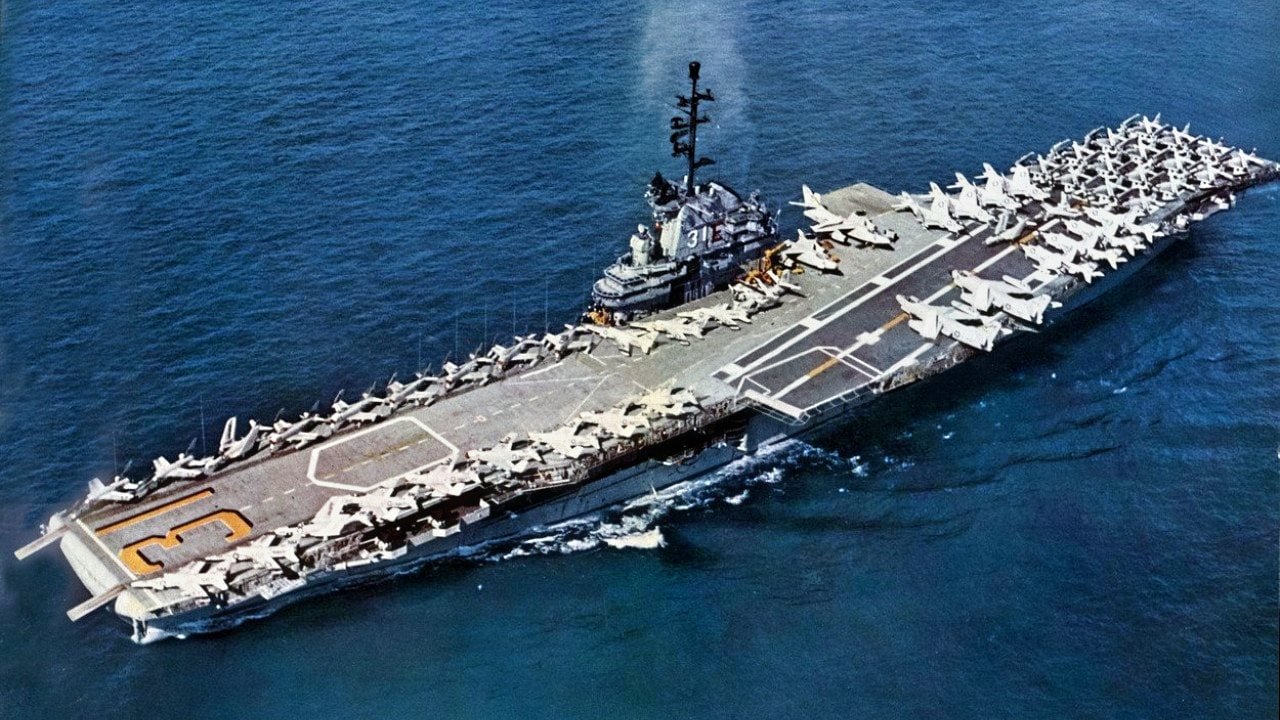How a U.S. Navy Essex-Class Aircraft Carrier Became a 'Spaceship'
In an innovative twist of fate, the decommissioned USS Valley Forge, an Essex-class aircraft carrier with a storied military history, was transformed into the fictional space freighter Valley Forge for the 1971 film "Silent Running."
Summary: In an innovative twist of fate, the decommissioned USS Valley Forge, an Essex-class aircraft carrier with a storied military history, was transformed into the fictional space freighter Valley Forge for the 1971 film "Silent Running."
-Originally built for World War II and later serving prominently in the Korean and Vietnam Wars, the carrier was repurposed as a film set after plans to turn it into a museum fell through. The ship's massive hangar deck and flight command area were extensively modified to create the interiors of a space vessel carrying Earth's last forests.
-This unique use of a retired warship highlights an extraordinary example of repurposing military assets for creative endeavors, leveraging the carrier's expansive structures to achieve cinematic effects that a conventional soundstage could not provide.
Essex-Class USS Valley Forge: How a Historic Aircraft Carrier Starred in 'Silent Running'
Today, Hollywood has CGI that can turn a small soundstage into just about anything in the galaxy and beyond. Even while some science-fiction films have been shot in exotic locations, the magic of post-production often created the vast openness of a space station or other interstellar vessel.
Such was not the case during a short period in February 1971, when the last of the U.S. Navy’s Essex-class aircraft carriers to join the fleet was transformed into the Space Freighter Valley Forge for the film Silent Running. In the film, the fictional freighter was noted for carrying six large geodesic domes holding the last forests of an environmentally devastated Earth.
The producers had determined that building sets on a Hollywood sound stage would have been prohibitively expensive, especially for a film with a minimal budget. After scouting out warehouses, cargo ships, and even oil tankers, the producers reached out to the United States Navy—and were directed to several decommissioned Essex-class aircraft carriers awaiting scrapping at the Long Beach Naval Shipyard.
Among those was the USS Valley Forge (CV-45), which had been commissioned in November 1946 and became the final Essex-class carrier to join the fleet. Built during World War II, she actually took part in the first bombing strikes in Korea in 1950 and was deployed to the region repeatedly through 1952, while she later performed combat deployments during the Vietnam War.
The USS Valley Forge was awarded eight battle stars for Korean War service and nine for her service in Vietnam, as well as three Navy Unit Commendations.
The retired carrier was slated to become a museum after being decommissioned in 1970, but funding fell through and she was sold to Nicolae Joffre Corp. for scrapping instead in 1971.
From warship to space freighter
The retired carrier proved perfect for the film production, and in honor of the filming location, the space freighter was christened Valley Forge.
According to sources, the carrier’s massive hangar deck was featured in the film as a cargo hold, which was repainted and filled with polystyrene modules representing futuristic cargo containers. The retired warship’s flight command area was heavily modified to represent the control room and living quarters for the fictional spaceship’s crew. Additional set pieces, computer consoles, and various props were brought in and used to dress the ship as the space freighter.
As the retired carrier was due for scrapping, water, and power had to be brought in, but the U.S. Navy allowed the production to cut out the bulkheads, which were replaced with wider passageways to allow for camera and actor movement. In fact, the production crew was allowed to do nearly anything to the ship, provided that no metal was removed.

CV-45 wasn’t the only retired U.S. Navy carrier to end up as a movie set. The Commencement Bay-class escort carriers USS Badoeng Strait (CVE-116), which also saw service during the Korean War, and USS Rabaul (CVE-21), which was never commissioned, were both used for the final scenes of the Clint Eastwood “Dirty Harry” film Magnum Force.
Author Experience and Expertise: Peter Suciu
Peter Suciu is a Michigan-based writer. He has contributed to more than four dozen magazines, newspapers, and websites with over 3,200 published pieces over a twenty-year career in journalism. He regularly writes about military hardware, firearms history, cybersecurity, politics, and international affairs. Peter is also a Contributing Writer for Forbes and Clearance Jobs. You can follow him on Twitter: @PeterSuciu. You can email the author: [email protected].


